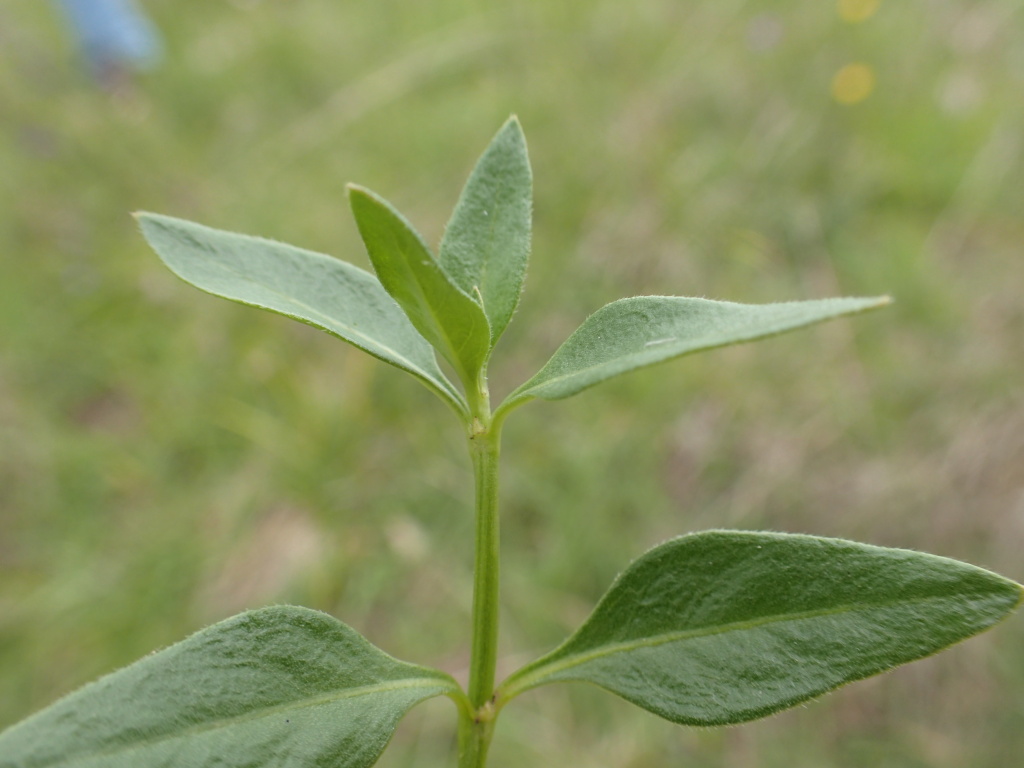Opercularia ovata
Hook.f. Broad-leaf StinkweedDecumbent herb or subshrub, rhizomatous; branches to 30 cm long, usually glabrous, sometimes sparsely pubescent. Leaves lanceolate to ovate, mostly 7–20 mm long and 3–10 mm wide, glossy, usually acute, glabrous or with scattered hairs on upper surface and midrib below, lateral venation usually apparent on lower surface; margins flat to recurved; petiole 1–4 mm long. Inflorescences axillary and terminal 10–20-flowered spherical heads; peduncles mostly 2–10 mm long, recurved, shorter than subtending leaves. Flowers bisexual; calyx-lobes lanceolate, 1–3 mm long, ciliate; corolla 2–4 mm long. Capsules dehiscing by an oblique abscission leaving a star-shaped cavity when seeds shed; seeds compressed-ovoid, 2–4 mm long, outer surface smooth and greyish, inner surface with 2 smooth longitudinal ridges, smooth or rugulose. Flowers Sep.–Dec.
Wim, GleP, VVP, GipP, OtP, WaP, Gold, CVU, GGr, DunT, NIS, EGL, EGU, WPro, HSF, HNF, OtR, Strz, HFE. Also SA, Tas. In Victoria widespread mainly across the south, often on moist heavy soils in grassland, open-forest and woodland. Rather rare north of the Dividing Range.
See note under Opercularia varia.
Jeanes, J.A. (1999). Rubiaceae. In: Walsh, N.G.; Entwisle, T.J., Flora of Victoria Vol. 4, Cornaceae to Asteraceae, pp. 616–642. Inkata Press, Melbourne.
 Spinning
Spinning
